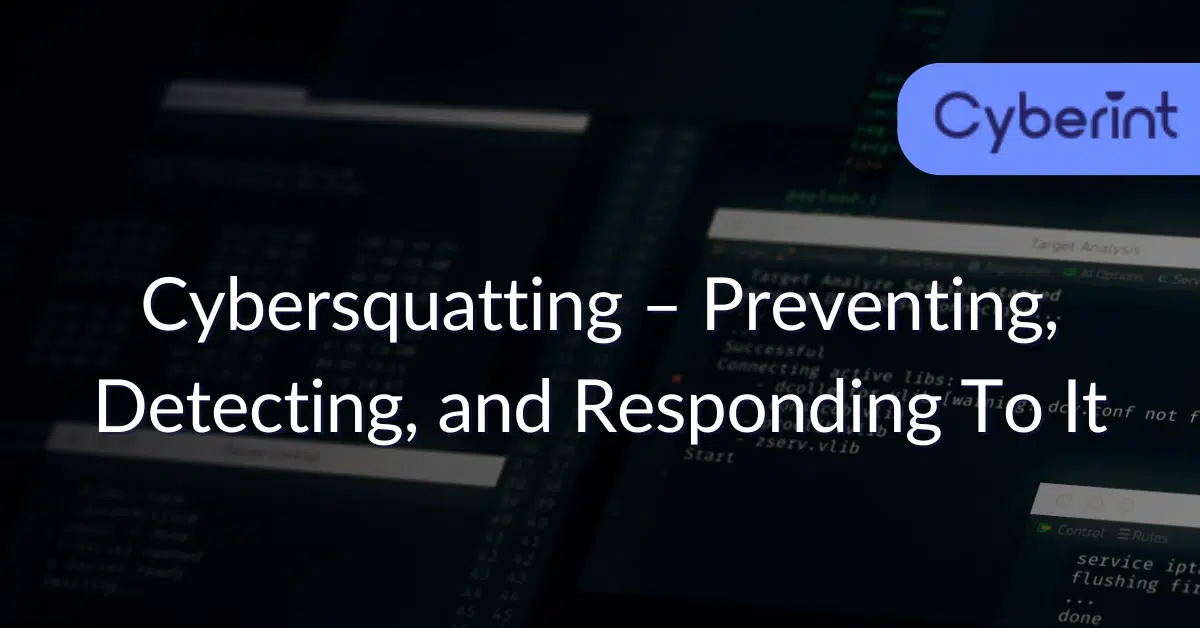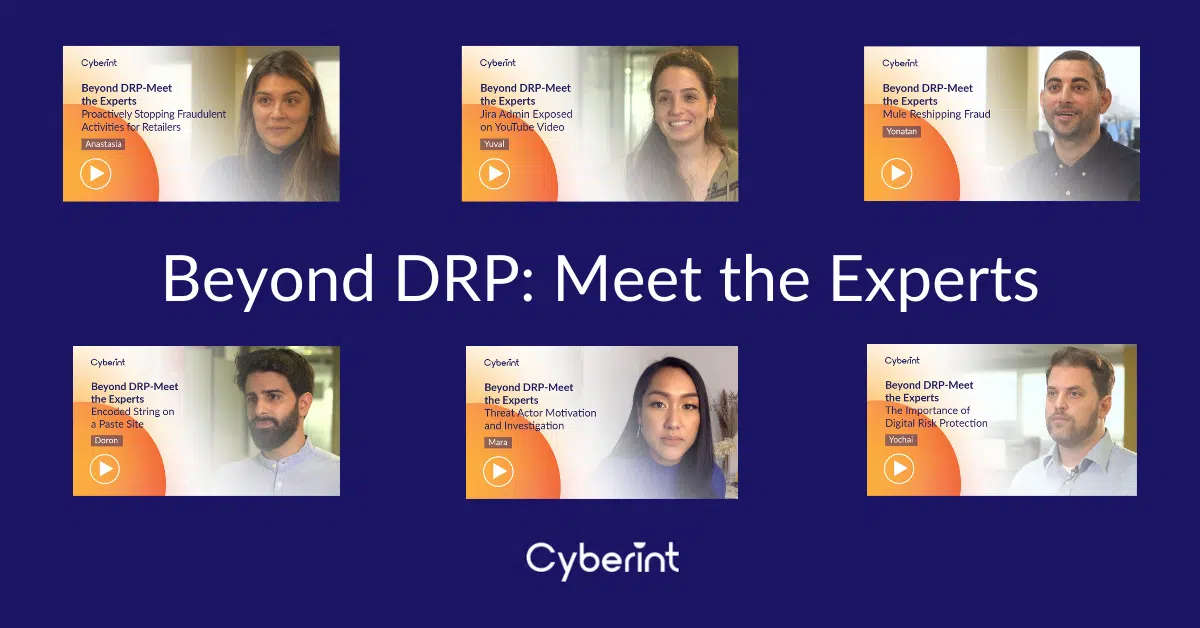


Self-Published Author and a digital marketing specialist. Read his thought leadership articles for information on the Attack Surface and Threat Intelligence.
Cybersquatting, or domain squatting, is registering, trafficking in, or using an internet domain name solely with the bad faith intent of profiting from the goodwill generated by a trademark that belongs to someone else. It refers to a bad faith abusive registration of a domain name in violation of someone else’s trademark rights.
There are different types of cybersquatting; we will look more closely at those below. In brief, the two primary forms of cybersquatting are warehousing a collection of similar domain names related to trademarks. The purchase, in this case, is made with the expectation of selling the domain names to the trademark owners, often at a highly inflated price. The other, as defined above, consists of a desire to profit from using a domain name similar to that of another and taking advantage of their goodwill and trademark. Because of the lack of clarity, the World Intellectual Property Organization (WIPO) defined the term as the abusive registration of a domain name.
When courts examine whether bad faith cybersquatting is occurring, they will consider several factors. Among these are:
These factors are among the more common issues in determining whether cybersquatting has occurred, but other elements may also be considered. A singularly important factor, however, is whether the original trademark has been registered with the US Patent and Trademark Office (USPTO). A USPTO patent holds protection from cybersquatting and proves ownership to intellectual property organizations. Common law trademarks offer some protection, but a USPTO registration offers far more robust protection.
As a trademark owner, preventing cybersquatting requires that you be proactive and vigilant from day one. Think about names similar to yours, and don’t assume obscurity. Instead, consider yourself the next Amazon or Microsoft, and buy every domain name that even hints at yours. They will likely be cheap at this point in your evolution, some for less than $3.00 US. Likewise, if you’re on the path to becoming a celebrity, do the same thing with your own name. Make sure you own your name and won’t have to worry about fighting with cybersquatters later on down the road.
Before engaging in litigation regarding cybersquatting, you should first send a cease and desist letter to the squatter. This is when and where you notify the cybersquatter that they are violating your rights. You also give them a heads-up that you will litigate, and they will likely be held liable for your damages.
Your cease and desist letter should include the following:
If this doesn’t stop the cybersquatting, you may be forced to litigate under ACPA. Once you file suit, the cybersquatter will usually settle very quickly or ignore your case, leading to a default judgment in your favor. You can use ICANN’s Uniform Domain Name Dispute Resolution Policy to file a UDRP complaint as an alternative to ACPA.
This administrative proceeding is usually cheaper and faster than ACPA litigation. On the other hand, a UDRP case can only get you the domain name; they have no authority to award financial compensation.
WIPO has engaged in ending cybersquatting for this entire century.
It offers an international administrative process whereby trademark owners can attempt to claim a squatted site. In 2021, trademark holders filed more than 5,000 cases under the Uniform Domain-Name Dispute-Resolution Policy (UDRP) with WIPO’s Arbitration and Mediation Center, surpassing the prior year’s total by 22 percent. The record number of cases brought WIPO’s total to 56,000. In 2006, there were under 2,000 complaints filed with WIPO, and even that was a significant increase from 2005.
WIPO generally attributes the accelerating growth in cybersquatting cases filed with WIPO to trademark owners reinforcing their online presence to offer authentic content and trusted sales sites; when so many more people were spending more time online, especially during the COVID-19 pandemic, domain names increased in importance.
WIPO UDRP cases in 2021 involved parties from 132 countries. The US, with 1,760 cases filed, France (938), the U.K. (450), Switzerland (326), and Germany (251) were the top five filing countries. More than 80 percent % of the claims made since 1999 have been decided in the complaining party’s favor.
Spain is unique in this context because the Spanish Supreme Court issued the first criminal sentence for cybersquatting. The court saw cybersquatting as analogous to misappropriation of another’s property. This case established a legal precedent that cybersquatting is a crime in Spanish jurisprudence. of cybersquatting as a crime in Spanish jurisprudence.
The Spanish case revolved around four members of the religious association Alpha Education for Comprehensive Health. The group created a web page with the domain name of www.alfatelevision.org and proceeded to open a bank and PayPal account for donations made to the association.
Some time later, disagreements arose between the members of the association. The four defendants opened a new website, changing the internet domain name and the password of the accounts on their way out the door. These changes redirected all new donations to accounts controlled by the four.
The association’s general secretary denounced the four members for misappropriation. They were eventually convicted and sentenced by the Provincial Court of Guadalajara, which held that the internet domain was an asset of the association.
This resolution was appealed to the Supreme Court via an appeal and upheld by the Court. In the end, the high court eventually acquitted the four accused since the facts of the case did not fit the crime of misappropriation. In this sense, the case highlights that there are elements of misappropriation that did not occur in this case. Further, the actions carried out by these individuals (creation of another domain and change of passwords) occurred before their termination. Therefore, they were not prohibited from engaging in those acts.
In addition, the sentence reflects cases in which cybersquatting can have criminal relevance. In the first place, if the conduct sought to harm the rights of a brand, it could constitute a crime against industrial or intellectual property. Secondly, if the intention was to use the domain name deceitfully to cause an error in the transfer of assets, the defendants could have faced a criminal charge of fraud. Finally, if cybersquatting were used to attack a domain name, the charge would likely be the crime of computer sabotage.
The United States has a federal statute, the Anticybersquatting Consumer Protection Act (15 USC Sec. 1125(d)). Under the ACPA, cybersquatting consists of registering, trafficking in, or using an Internet domain name with the bad faith intent of profiting from the goodwill of a trademark belonging to someone else. Despite the ACPA’s expansion of the owner’s rights, the US “fair use” doctrine can allow someone else to purchase a celebrity’s name for a domain as long as there is no attempt to profit from the ownership. Putting the domain name on the market, however, does constitute a violation of ACPA.
Jurisdiction and venue – the two legal issues deciding where a court case must be filed – are highly complex in internet law. Given the realities of cyberspace and the difficulty of defining where something has happened, these issues can prevent a legitimate cybersquatting case from ever getting to court.
There are now programs that can help you deal with cybersquatting. The software can find Digital Millennium Copyright Act violators and automatically enforce your copyright. They can also track down fake websites, cybersquatting your name, and force a takedown. Programs called cyber threat intelligence tactical operations strategic platforms can find out what information they have gathered and acts they have engaged in while maliciously using your name. They can also tell you if the acts of another have caused your IP address to be tagged as malicious and how to fix it. They can also monitor your domain names for showing up on hacked websites and phishing databases.
The more significant social media sites have worked diligently to prevent the use of their platforms for cybersquatting.
Twitter, which, of course, is currently undergoing an incredible rebuilding, has so far forbidden cybersquatting as seen in many domain name disputes, including “username for sale” accounts: Twitter policy states that attempts to sell or extort other forms of payment in exchange for usernames will result in immediate account suspension. Additionally, Twitter has an “Impersonation Policy” that forbids non-parody impersonation. An account may be guilty of impersonation if it confuses or misleads others. Further, accounts with the clear intent to confuse or mislead others may be permanently suspended from Twitter access. In this context, Twitter has defined parody as whether a reasonable person would be aware that the fake profile is a joke. Eventually, Twitter went a step further, unveiling its verified accounts feature. Currently, new Twitter owner Elon Musk continues to modify the verified checkmark system. In any case, at present, the blue checkmark still means a verified real person or entity behind a given account.
Facebook reserves the right to restrict the use of usernames that appear to infringe on a trademark. Owners are responsible for complaining to Facebook about infringement on a form the forum provides. In addition, Facebook requires usernames to be verified with mobile phone authenticator programs. Any new accounts must be verified by phone to obtain a user name.
A cybersquatter who obtains and maliciously uses a name similar to yours is stealing your goodwill and damaging your brand. Even if they do nothing but hold the name inactively, they are damaging you by preventing you from using your own name. But your loss of use of your name is only the beginning.
A cybersquatter can use your name to direct visitors to undesirable locations such as pornography sites, phishing sites, and even sites belonging to your competitors. These actions will quickly and severely damage your business reputation and your brand.
The best – and easiest – ways to avoid these potentially catastrophic consequences are to plan ahead. Don’t assume you will always be a small mom-and-pop or lemonade stand operation. Instead, assume that you will grow massively and dominate your sector of the business world with the power of Facebook or Microsoft. Take the small dollars needed to buy domain names and buy – as soon as possible – any and every name that resembles yours or your business’s name. Even ten names could cost you as little as $100, and you will buy tremendous protection for that small investment. While there are ways to terminate cybersquatting once it has occurred, they tend to be rather expensive and time-consuming. Moreover, a reputation lost is tough to rebuild. Better to invest in keeping it clean in the first place.
©1994–2025 Check Point Software Technologies Ltd. All rights reserved.
Copyright | Privacy Policy | Cookie Settings | Get the Latest News
Fill in your business email to start

